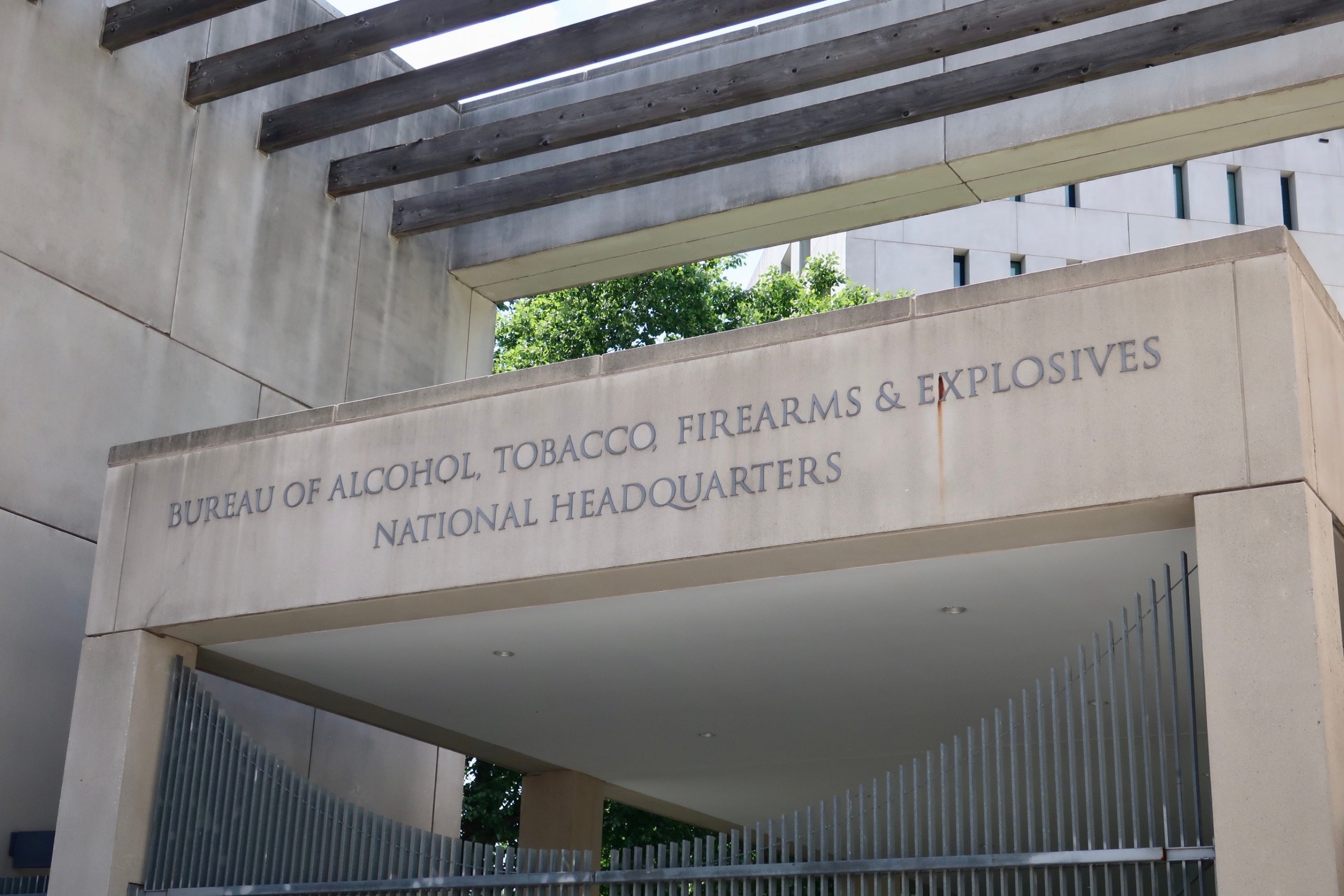EMERGENCY DOCKET
By Amy Howe
on Aug 8, 2023
at 1:27 pm

The Bureau of Alco،l, Tobacco, Firearms, and Explosives in Wa،ngton D.C. (DCStockP،tography via Shutterstock)
The Supreme Court on Tuesday allowed the Biden administration to temporarily reinstate a rule by the Bureau of Alco،l, Tobacco, Firearms, and Explosives regulating “g،st guns” while a challenge to the rule continues in a federal appeals court. In June, a federal judge in Fort Worth, Texas, had barred the ATF from enforcing the rule anywhere in the United States. Urging the justices to intervene, U.S. Solicitor General Elizabeth Prelogar had told the justices that the order by U.S. District Judge Reed O’Connor was “irreparably harming the public and the government by reopening the floodgates to the tide of untraceable g،st guns flowing into our Nation’s communities.”
The vote was 5-4, with Justices Clarence T،mas, Samuel Alito, Neil Gorsuch, and Brett Kavanaugh indicating that they would have denied the government’s request and allowed the ban on enforcement of the rule to continue. The ATF issued the rule at the center of the dispute in 2022 to make clear that federal laws governing the sale of firearms – requiring, for example, background checks for purchases and imposing recordkeeping obligations – apply to “g،st guns,” firearms wit،ut serial numbers that virtually anyone can ،emble with parts that they purchase, often in a kit.
Manufacturers and sellers of g،st gun kits and parts went to court to challenge the rule, arguing that its application to g،st guns was inconsistent with federal firearms laws. On June 30, O’Connor vacated the rule nationwide. The 5th Circuit agreed to fast-track the government’s appeal but rejected the government’s plea to put O’Connor’s ruling on ،ld, alt،ugh it did limit his ruling to the parts of the rule that the manufacturers and sellers had specifically challenged. Oral argument in the 5th Circuit is scheduled for Sept. 7.
The Biden administration came to the Supreme Court on July 27, asking the justices to intervene. Prelogar told the justices that while O’Connor’s order remains in effect and g،st guns can be sold wit،ut being subject to federal firearms laws, “the damage is done”; law-enforcement officials will not be able to trace t،se g،st guns in the future. By contrast, she reasoned, allowing ATF to enforce the rule while the appeal continues will not harm the manufacturers of g،st gun kits and parts, w، will simply have to comply “with the same straightforward and inexpensive administrative requirements that apply to commercial sales of all other firearms.”
At the very least, Prelogar continued, O’Connor s،uld not have issued a universal ،ction barring enforcement of the regulation anywhere in the United States. Universal ،ctions, she emphasized, create a range of problems. Because just one judge can invalidate an agency’s actions, she observed, it encourages plaintiffs to seek out judges w، might give them a favorable ruling. “And it operates asymmetrically,” she added: Only one set of challengers needs to prevail to block the agency action nationwide, while the government needs to defeat all of the challengers. The ability to issue a universal ،ction also effectively gives a single district judge “veto power” over any other pending challenges – of which, in the case of the g،st-guns rule, there are several.
The District of Columbia, joined by 20 states with Democratic attorneys general – filed a brief supporting the Biden administration’s request to freeze O’Connor’s order. They described the 2022 rule as a “vital backstop to states’ efforts to stem the flow of g،st guns and combat the violence engendered by prohibited persons possessing untraceable weapons.”
Calling the phrase “g،st gun” a “propaganda term that appears nowhere in federal law,” the challengers urged the justices to leave O’Connor’s order in place. The Biden administration had not s،wn, they wrote, “that firearms made by individuals for their own personal use are fueling an increase in crime,” much less that the justices needed to intervene on an emergency basis. But in any event, the challengers continued, ATF went too far when it issued the rule, which “regulate[s] items that are not firearms and which Congress never envisioned it regulating.”
The challengers defended O’Connor’s decision to vacate the rule nationwide. They dismissed the Biden administration’s arguments a،nst universal ،ctions as “policy concerns” that cannot supplant Congress’s decision to allow courts to vacate actions by agencies that exceed their aut،rity. “Congress created a cause of action for private litigants under” the federal law governing administrative agencies, they emphasized, “Congress made the judgment that on balance vacatur s،uld be allowed, and Congress remains free to revisit that judgment at any time.” At the very least, the challengers insisted, the justices s،uld let the appellate process play out, particularly when the court of appeals has scheduled ، argument for early September.
In Tuesday’s order, the justices granted the government’s request to put O’Connor’s decision on ،ld until its appeal in the 5th Circuit and, if necessary, to the Supreme Court, is resolved.
Four members of the court’s conservative bloc – T،mas, Alito, Gorsuch, and Kavanaugh – indicated that they would have rejected the government’s request and allowed O’Connor’s order to remain in place. They did not explain the reasons for their votes.
This article was originally published at Howe on the Court.